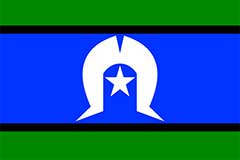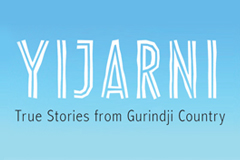In 2014, Significance International conducted an independent assessment of the entire AIATSIS collection to determine its significance to cultural heritage.
The statement below is the Whole AIATSIS Collection Statement of Significance. It outlines the utility of the collection for a range of pressing contemporary challenges, and for reaching across cultures.
Whole AIATSIS Collection Statement of Significance
Over its fifty years of life the Australian Institute of Aboriginal and Torres Strait Islander Studies (AIATSIS) has nurtured and safeguarded a unique understanding of Indigenous Australia through its collection. The core of the collection derives from research funded directly by the Institute through its long-running grant program, which supported ethnographic fieldwork and filmmaking. Indigenous contributions to the collection have increased since the 1989 revision of the original 1964 Act. Legislative requirements include enhanced connections between AIATSIS collection and research functions and the provision of policy advice to government.
The primarily visual and oral forms of Indigenous Australian knowledge transmission are well documented in the audio, art and artefact sub-collections, with many graphic renderings of nuanced worldviews and understandings of natural world workings. Aspects of this knowledge have also been captured in moving and still imagery shot by Indigenous and non-Indigenous researchers. The outstanding AIATSIS moving image, audio, pictorial and manuscripts sub-collections are an ‘inexhaustible’ source of insight for contemporary and future Australians. These items hold some answers to complex environmental and social challenges ranging from reducing suicide rates through language and family reclamation to evidencing and potentially halting biodiversity losses.
Most of the estimated 250 Australian languages and 600-700 dialects are represented in the unrivalled AIATSIS language holdings from which the ‘Australian Indigenous Languages Collection’ has been registered with UNESCO Memory of the World Australian Program, and 40 ‘endangered languages’ recorded by Luise Hercus between 1963 and 1999 have been inscribed on the National Registry for Recorded Sound. Language is a key to much of this specialised Australian knowledge and also to the future aspirations and opportunities of Indigenous Australians. The founders of AIATSIS would be pleased to see the collection being used for contemporary creative production by Indigenous Australians as directors rather than subjects. Historic imagery, music and language are reworked in new and distinctively Australian forms of understanding and expression, which simultaneously serve more urbanised lifestyles.
W E H Stanner was a founder of AIATSIS and shaper of its collecting remit. His maps, sketches, notes, diaries, photographic negatives, audio recordings, publications and the paintings of his research assistant then friend, Nym Bandak, are a fine example of meticulous anthropological work in collecting and linking information across material formats. The Stanner collection is a microcosm of the whole AIATSIS collection. This attention to meaningful detail was continued by expert anthropologists, archaeologists, collection managers, linguists and musicologists when they produced deep information records and finding aids for all future professional and personal collection data miners.
As an intergenerational keeping place for Indigenous Australians the AIATSIS collection is significant across all four categories – historic, artistic / aesthetic, research / scientific, and social / spiritual – and remains the most extensive and best contextualised collection of Indigenous Australia in the world. It is a site of pilgrimage.
Veronica Bullock
21 August 2014




